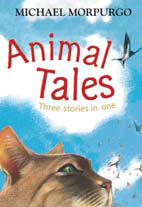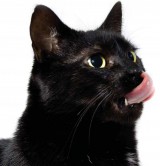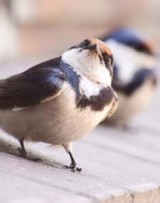Children’s writing will soar with Michelle Larbey’s challenging games and activities based on Michael Morpurgo’s Animal Tales...
 Warm up with a quick-fire game…
Warm up with a quick-fire game…
Use creative warm-up games at the start of your session to develop children’s language, creativity and to help them think of imaginative words and ideas.
For instance, you might like to name 10 things you could do with a feather. (Provide children with an assortment of feathers to touch as this will trigger their imagination.)
Initially children will tend to generate obvious ideas, e.g. ‘stuff a pillow’. Teachers need to support children by helping them dig down deeper and generate more imaginative responses. Try using the expression ‘tell me more’ to encourage them to think more creatively. Here are a few examples;
• I could shrink myself to the size of a fairy and ride on a soft white feather.
• I could cover myself in glue and feathers and fly to Timbuktu.
• I would use a peacock feather to tickle the chin of a giant.
 Swoop in on eye-catching words and phrases…
Swoop in on eye-catching words and phrases…
Read Colly’s Barn, the first story from Michael Morpurgo’s Animal Tales (Egmont Childrens Books, 2008). Similar to a magpie, we want children to steel shiny, exciting words and phrases from the text and use them within their own writing. Morpurgo uses colourful language and word choices; give the children the opportunity to ‘magpie’ and collate these in a writing journal or ‘magpie book’, e.g. Page 5 – ‘Screecher stretched his legs and flexed his talons.’ Page 8 – ‘The fledgling swallow perched precariously on the edge of its nest.’ Page 11 – ‘Colly’s last fledgling beat his wings frantically.’ Once the children have had the opportunity to jot down and magpie exciting words and phrases, give them time to discuss and share their ideas. This will encourage pupils to learn and share with each other.
 Learn the techniques of great authors…
Learn the techniques of great authors…
Read pages 10 and 11 slowly. Explore how Michael Morpurgo creates suspense within this chapter. Unpick the writer’s techniques and put together a list of the effects the author creates. Morpurgo makes the reader feel nervous and anxious about whether the swallow fledgling will survive the prowling cat. Examine how the author does this. Here are some ideas…
• Character’s movements – ‘The cat crept in through the door’ – makes the reader feel uneasy.
• Repeating phrases creates an impact – ‘The birds warned each other that the cat had entered, “Look out! Look out!’
• Powerful verbs to describe the action – ‘Her tail whisking to and fro, her eyes fixed on the nest’
• Alliterative sentences – ‘the cat stalked stiffly’
• Short, snappy sentences to slow down the pace of the story – ‘She knew she had only to wait. This bird was for playing with.’
• Personification of the old barn where the birds lived – ‘The wind whined and whistled through the eaves, the walls shuddered and the beams creaked and groaned.’
Now you have created this writers’ checklist, have a go at writing your own suspense paragraph. You could use another type of bird or try changing the predator. Use my model below: The cat edged into the shadow of the bird box. Her piercing blue eyes were fixed on the wooden box just above her head. As she watched the excited parents feeding their fearless fledglings, she listened to her rumbling stomach. “Lunch time,” she thought to herself. She knew she had to wait. It was only a matter of time until the innocent fledglings would be left alone.
Help children organise their thoughts and structure their work…
Use the writing frame below to produce a non-chronological report about various types of birds (swallows, crows, house martins, cock robins, wrens, buzzards, fantailed doves, barn owls etc). Children should choose a bird that interests them and use the internet or school library to find out more information about their subject.
| Paragraph 1 | What type of bird? | Definition |
| Paragraph 2 | What does he/she look like? | Appearance |
| Paragraph 3 | Where do they live? | Key information |
| Paragraph 4 | What do they eat? | Lifestyle |
| Paragraph 5 | Other interesting facts? | Extra information |
| Paragraph 6 | Most amazing thing? | End |
Use this as a simple framework for the children to gather their ideas. In pairs they can role-play a basic interview in which one of them plays an expert on bird keeping. Use my model below as a basis for their own writing.
 • A Barn Owl is a nocturnal bird. They have extremely good eyesight however; they rely mostly on their hearing.
• A Barn Owl is a nocturnal bird. They have extremely good eyesight however; they rely mostly on their hearing.
• Barn Owls are medium in size and mainly white with a heart-shaped face.
• Surprisingly they have long legs, toes and talons which enables the owl to catch its pray easily.
• You can find Barn Owls living in trees or often nesting in barns and other abandoned buildings.
• Barn Owls have a hooked shaped beak which helps them catch small mammals like field voles, common shrews and wood mice. They mainly hunt at night.
• Barn Owls do not hoot, they screech.
• Unlike human eyes, Owls’ eyes look forward in a fixed position and cannot move from side to side. To look around the owl must turn its entire head.
Ask children to read through and underline key words and phrases they could use in their own writing. Now demonstrate how they can plan their report using the frame – jotting down information about a different bird as an example. Children will need time to orally rehearse each section, and you should use shared writing to illustrate how to turn the plan and structured talk into a written text.
Bring the barn to life…
Throughout the story Morpurgo refers to the ‘old barn’ – this could potentially be a great starting point to write poetry.
First explore the text and magpie words describing the barn. Then make a second list of verbs that describe human actions, e.g. shiver, whisper, whine. Michael Morpurgo has used personification as a writing technique. See how many examples you can find in Chapter 2. For instance, ‘the walls shuddered and the beams creaked and groaned.’
Use my poem as a model for the children’s own writing:
In the old barn –
The oak beams whisper secrets
In the old barn –
The wooden barrel groans
In the old barn –
The hay bale giggles
In the old barn –
The cracks in the roof whine
In the old barn –
All is still
Supporting parents with maths
Ace-Maths
If your marking doesn’t affect pupil progress - stop it!
Ace-Classroom-Support
